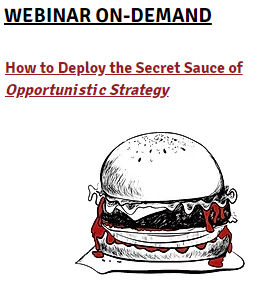Last May, in my post, What You Need To Know About The Flea That (Metaphorically) Killed The Medical Center CEO, I wrote about the fact that, as in a guerrilla war, change within an organization, as well as within a domain in which the organization interacts, can occur as a result of agitation by a vocal minority. Just as no vote was required for a dictator like Castro to take over Cuba, no medical staff vote, no survey by Press Ganey, no long and drawn out process among “stakeholders,” is required to topple the status quo.
The example used in the original post was the dramatic end of the rather short tenure of Sheldon Retchin, M.D. as CEO of Ohio State University’s Wexner Medical Center. Dr. Retchin’s downfall was triggered by two letters of “no confidence” signed by no more than 37 out of the 1,200 physicians employed at OSU Wexner. Yes, 3% of the medical staff was able to unseat the king.
And, now, not quite a year later, at least 10 highly placed physicians leaders and executives have chosen to leave OSU Wexner due to what has been said is its inability to address necessary cultural changes.
The lesson gleaned in the original post was that what you think is permanent is only temporary. How temporary is the question.
What you do, and how you do it, within your organization, and how you project it to essential third parties (e.g., hospital-based medical group to hospital) is all-important in maintaining relationships, contracts, and even existence.
And, just the same, from the perspective of the individual, the small, the “out group,” the “flea,” a steadfast, vocal, and somewhat intransigent minority, can kill the dog. The large group can be made irrelevant. The hospital CEO can be forced out. The small organization can ingest the larger. Yes, the dog bites back. No win is guaranteed.
But, there’s another way, too, of looking at the entire string of events at, just as an avatar, OSU Wexner.
We tend to think that history played out in some determinative way. That some war was won, or a corporate valuation achieved, or a medical system empire created due to the greatness of the leader, the supreme skills involved, and the predestiny of the outcome. But that’s a lie we tell ourselves. History observed is simply the remnant of alternative historical paths that are not capable of observation (at least by us) and a great deal of randomness. Small events, small changes, can, and do, knock what is, and therefore, what might be, off course, or on course, depending on your scoring system.
The mistake we make is to assume that what is will always be and then either place all of our bets on it, or believe that it’s futile to bet against it.
Yes, overall, things including organizations that have existed for a long time are more likely to continue to exist when compared with things that have just come into existence. That may be the way to bet. But the bet has to be hedged. Roman Empire, anyone?
In the original “flea” post, the “takeaway” was that the few can make the mighty fall, and fall hard. That if you’re the mighty (the dog in the flea example) watch out for the few, for the flea. And, alternatively, that you can be the flea. That lesson still stands, as valid as ever.
In this post, I’m suggesting another, complementary point: That even if you’re neither the dog nor the flea, the situation that you think exists may simply and immediately stop, or simply and slowly morph into something unacceptable. The question is, how are you going to hedge your bet that the situation will continue in a fashion acceptable to you?
The physician leaders and executives who left OSU Wexner had a hedge: The ability to jump to other positions, in some cases reported to be on much improved financial terms.
What’s your medical group’s hedge? What’s your personal hedge?




